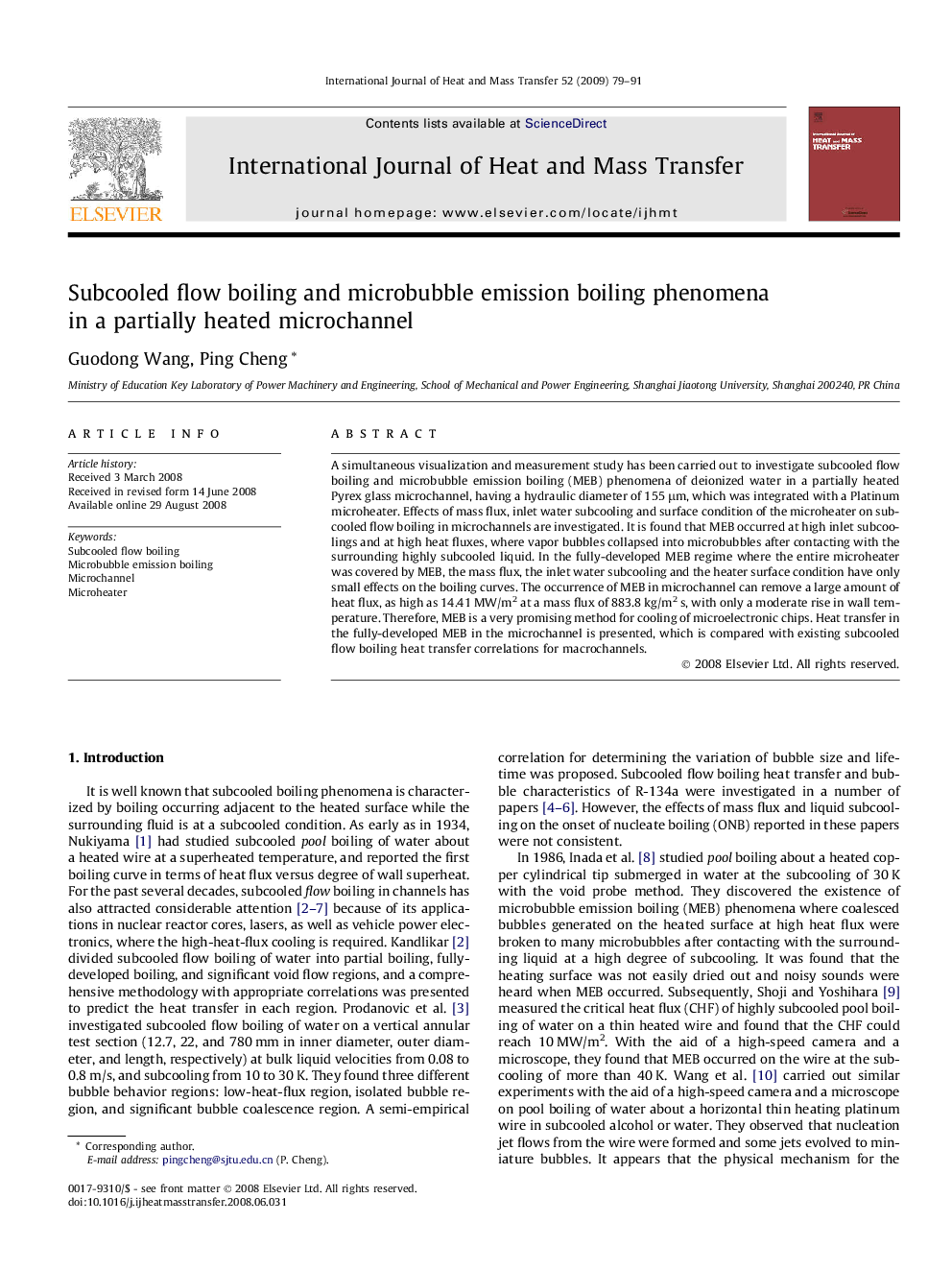| Article ID | Journal | Published Year | Pages | File Type |
|---|---|---|---|---|
| 660753 | International Journal of Heat and Mass Transfer | 2009 | 13 Pages |
Abstract
A simultaneous visualization and measurement study has been carried out to investigate subcooled flow boiling and microbubble emission boiling (MEB) phenomena of deionized water in a partially heated Pyrex glass microchannel, having a hydraulic diameter of 155 μm, which was integrated with a Platinum microheater. Effects of mass flux, inlet water subcooling and surface condition of the microheater on subcooled flow boiling in microchannels are investigated. It is found that MEB occurred at high inlet subcoolings and at high heat fluxes, where vapor bubbles collapsed into microbubbles after contacting with the surrounding highly subcooled liquid. In the fully-developed MEB regime where the entire microheater was covered by MEB, the mass flux, the inlet water subcooling and the heater surface condition have only small effects on the boiling curves. The occurrence of MEB in microchannel can remove a large amount of heat flux, as high as 14.41 MW/m2 at a mass flux of 883.8 kg/m2 s, with only a moderate rise in wall temperature. Therefore, MEB is a very promising method for cooling of microelectronic chips. Heat transfer in the fully-developed MEB in the microchannel is presented, which is compared with existing subcooled flow boiling heat transfer correlations for macrochannels.
Related Topics
Physical Sciences and Engineering
Chemical Engineering
Fluid Flow and Transfer Processes
Authors
Guodong Wang, Ping Cheng,
